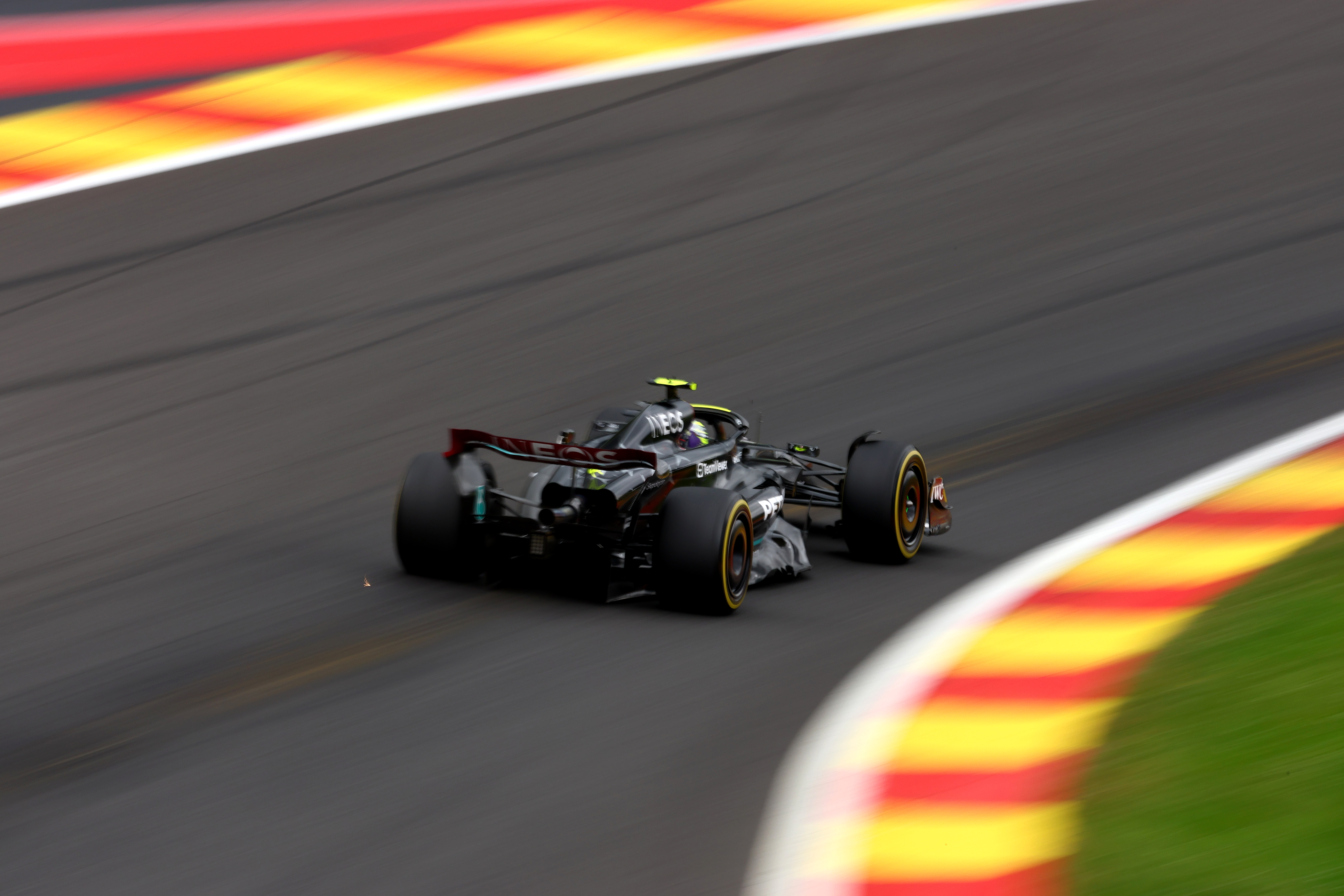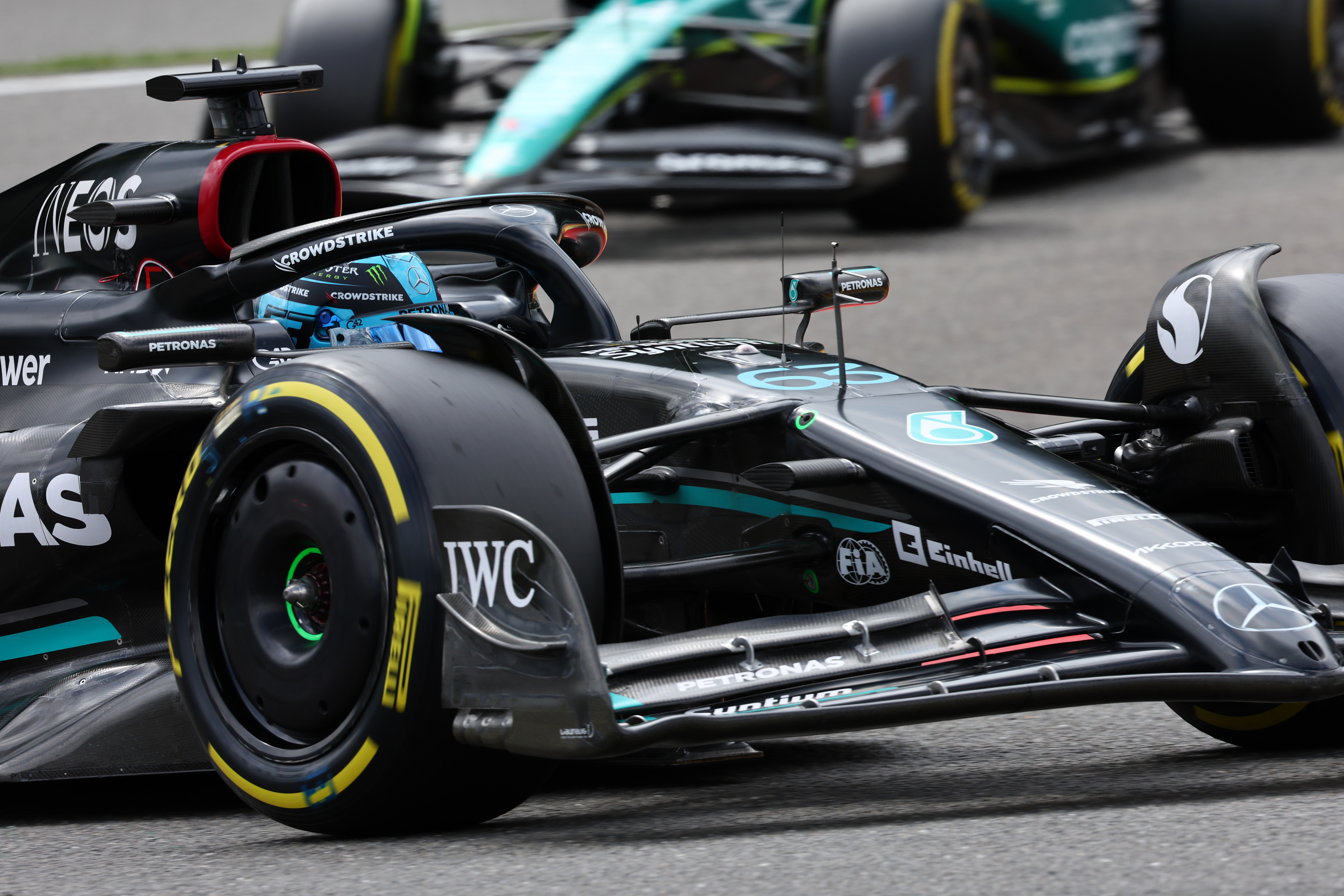Up Next

Mercedes technical director James Allison says the team has spent much of the 2023 Formula 1 season finding out it was “too cautious” in response to rule changes designed to curb bouncing.
After teams spent much of 2022 grappling with unexpected porpoising and bouncing issues from F1’s new era of ground effect cars that were only partly cured by a mid-season rule change, further rule changes – including raising the floor edge by 15mm – were introduced ahead of 2023.
The changes weren’t ever going to completely eradicate bouncing, but rather ease the problem and prevent teams from running the cars in a way that could do damage to the drivers in the long term.
According to Allison the change left Mercedes with a clear choice to make over the winter. One that was influenced by the painful memories of 2022 where endlessly chasing bouncing ‘wrecked’ Mercedes’ season and firmly put a stop to its sustained period of success in F1’s hybrid era.
“Although we made great strides last year, 2023 presented all the teams with a rule change that offered some protection against bouncing,” he explained.
“Over the winter we faced a choice. Go aggressive and trade the bouncing protection in the rule change for performance, or take a more cautious route and steer clear of the sort of porpoising that wrecked our season last year.
“We chose the cautious path, knowing that it would be less painful to correct if we were wrong. The story of our year so far has been mostly about finding out that we had been too cautious and making the changes to correct that.”
That’s a testament to just how haunting the surprise porpoising has been for Mercedes throughout this new era.

And it’s a problem that’s still troubling the team despite its cautious approach, as evidenced by its reoccurrence at Spa where George Russell said it was a “shame to see that as a sport at the pinnacle of motorsport the majority of teams are still struggling with bouncing”.
Mercedes chief technical officer Mike Elliott believes that bouncing was “probably a result of setup or the circuit itself” rather than a returning characteristic brought in by recent upgrades.
But it’s proof that porpoising is yet to be in Mercedes’ rear view mirror despite the cautious trade-off it made over the winter.
An approach that Allison seems to indicate potentially lowered the ceiling of the W14, perhaps one of many contributors to the team’s failure to make significant inroads on the all-conquering Red Bull.
High hopes were placed on the major upgrade package debuted at the Monaco Grand Prix but the team remains far adrift of the RB19 as evidenced by Lewis Hamilton finishing almost 50 seconds behind Max Verstappen at Spa despite starting three places on the grid ahead of him.
Clearly 2023 is a lost cause and there’s already signs that the team is using it as a test bed for 2024 with bodywork packages – like the one it brought to Spa – more about gathering data for the W15 than adding chunks of performance to the W14.
“At this stage of the year the windtunnel is heavily focused on 2024,” Allison confirmed.
“Large chunks of the drawing office, vehicle dynamics, manufacturing for long-lead time production items are starting to gather their skirts.
“From the summer break onwards, next year’s car is where the largest call is answered. But that also gives opportunities for the W14 too.”
Improving an “annoyingly dead” characteristic

Fundamental to Mercedes’ improvement is the reversal of a characteristic that’s making life difficult for its drivers.
“Bread and butter downforce is always a good thing [but] we are also trying to make the car more reassuring for the drivers when they initially turn in,” Allison explained.
“It feels too reactive. And then when they get to the apex they have the opposite problem, where we want it to bite at the front and it doesn’t.
“It’s unstable when you first turn the wheel and then annoyingly dead when they get to the apex. We want it the other way around. That’s what we are working on.”
Hamilton complained that he didn’t “feel connected” to the W14 earlier in the year and said he hadn’t enjoyed driving any Mercedes in this new era until the weekend he took pole position in Budapest.
Even after that pole lap Hamilton identified the rear end instability on the W14 as a crucial area for the team to fix.
Whether that can be achieved within this season remains to be seen. What’s seemed far more certain for a while is that the kind of major step that Mercedes failed to make with its ‘cautious path’ heading into 2023 will have to wait until 2024.
The question will be whether the team continues to be spooked by the porpoising and bouncing issues that never seem to completely go away or whether it can finally lay those ghosts to rest.






